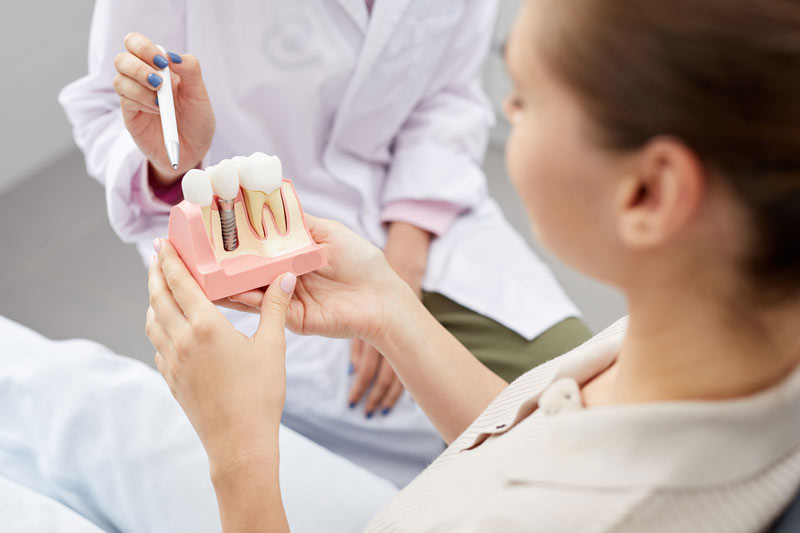Brushing
It’s best to brush twice a day with a fluoride toothpaste. When you brush, the fluoride in your toothpaste reacts with the enamel of your teeth making them stronger and more resistant to the acid created in your mouth over the day. The best way to brush is by using a soft or medium tooth brush or an electric toothbrush. Although studies suggest that using an electric toothbrush can remove plaque better than a manual brush, the right technique in using the manual toothbrush can also go a long way.
When brushing your teeth, all areas must be covered (e.g. bite, inside and outside) including the margin of the tooth and gum line. Brushing the teeth should be done in small rotating movements at a 45°C angle (into the gum line), covering all the areas for about 2 minutes per arch (top and bottom).
Flossing
Flossing is recommended when the area between the teeth is too small for interdental brushes to reach. Some types of floss will allow you to insert the floss from the top whereas others will need to be pushed in between the teeth. It’s best to floss at least twice a day up and down over the tooth and back and forth.
Interdental Brushes
Most people are recommended to use interdental brushes. These are small brushes that come in sizes ranging from 0.4 mm to 1.3 mm. These brushes are to be used in between the gaps of the teeth. Your dentist can advise you which interdental brush size(s) is/are best for you. Some people have various sized brushes for all the different gaps between their teeth. The correct use of interdental brushes can help improve the health of your gums and prevent long-term damage i.e. decay, gum disease and periodontal disease.
Mouthwash
Mouthwash is a handy adjunct for patients who have dental problems. Speak to your dentist to get advice on the best mouthwashes for you. Some brands of mouthwash are specific for patients with gum disease, some for patients who need that extra bit of fluoride protection. When using a mouthwash be aware that some will stain your teeth (read the back label of the bottle to be sure about the mouthwash you are using).
Regular Visits
Aside to maintaining your oral health at home twice a day, it is advised to visit the dentist regularly. The dentist will be able to recognise any problems. A clean by the hygienist or dentistwill remove all plaque and tartar built up in places a toothbrush cannot reach leaving your teeth wonderfully clean






